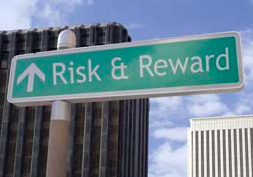 Can we say that modern businesses prefer long-term over short-term? For sure the business environment is more and more rewarding companies that think ahead and do not fail to consider existing or potential risks. What has happened in finance is striking and is based on the concept that long-term benefits outweigh the short-term pain. The Dow Jones Sustainability Indexes and FTSE4Good represent the recognition of financial markets that making shareholder happy in a short period of time is no synonym of success. These are based on the assumption that: businesses’ goal is to ensure its existence in the long run and that, to do this, they should consider existing and potential risks and challenges.
Can we say that modern businesses prefer long-term over short-term? For sure the business environment is more and more rewarding companies that think ahead and do not fail to consider existing or potential risks. What has happened in finance is striking and is based on the concept that long-term benefits outweigh the short-term pain. The Dow Jones Sustainability Indexes and FTSE4Good represent the recognition of financial markets that making shareholder happy in a short period of time is no synonym of success. These are based on the assumption that: businesses’ goal is to ensure its existence in the long run and that, to do this, they should consider existing and potential risks and challenges.
The Dow Jones Sustainability Index (DJSI), for instance, was established in 1999 when Sustainability Asset Management (SAM) developed a tool (the Corporate Sustainability Assessment) to identify companies that are better equipped to recognise and respond to emerging sustainability opportunities and challenges presented by global and industry trends. This capacity is assessed every year through a questionnaire that companies that are invited to participate have to fill. The world’s largest 2,500 companies, part of Dow Jones Total Stock Market, are invited to participate and only 10% that demonstrate to be top in their sector are chosen. The DJSI currently manages USD 6 billion in assets through a variety of financial products.
There are at least 3 interesting elements about the index.
Firstly, at least 50% of questions in the questionnaire are risks and opportunities specific to an industry. For the fashion industry, for instance, questions may regard the scarcity of raw materials, cotton amongst others, or the toxicity of certain substances used in finishing processes. Businesses are judged on the basis of what measures are taken to face these challenges. This is based on the conviction that sector-specific sustainability opportunities and risks play a key role in a company’s long-term success.
Secondly, the criteria and considered risks are updated over time. As an example, FTSE applied the Supply Chain Labour Standards Criteria only to companies that produce clothing, accessories, footwear, toys and food products. Over the last few years attention has expanded to other consumer products (e.g. consume electronics).
Thirdly, the index invites companies to transparency as they need to answer between 80 to 120 very specific questions.
In 2012, the following companies, among others, were listed on DJ Tex Clothing Accessories & Footwear:
- Puma, since 2006 and on FTSE4Good since 2005. In 2010 the brand was rated leader in its sector;
- Nike is on FTSE4Good and DJSI since 2004;
- Adidas has been on DJSI for 12th consecutive time and rated best company in its sector in 2012;
- Inditex has been on FTSE4Good for the 9th consecutive time and on DJSI since 2011;
- H&M on FTSE4Good and, since 2012, on DJSI;
- Luxury brands like Burberry, Christian Dior and Hermes.
- an investment of $1 in the beginning of 1993 in a value-weighted portfolio of High Sustainability firms would have grown to $22.6 by the end of 2010, based on market prices.
- A similar investment in a value-weighted portfolio of Low Sustainability firms would have grown to only $15.4 by the end of 2010.

